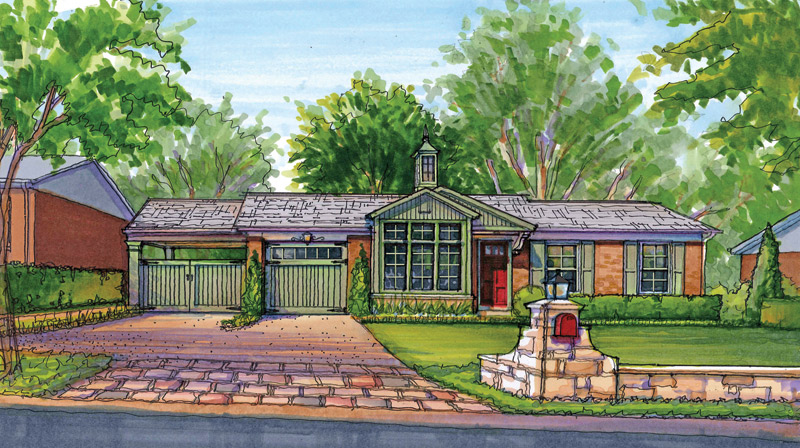Over several years of writing this column, I have become aware of various universal themes that are often a major part of a given design problem, but not included in my written response for reasons of space and practicality. Lessons Learned, a new feature of the column, will help address this issue.
Often, 50-year-old homes like this occupy more generous lots that are closer to the action than new starter homes built farther from urban areas. That can make these older houses logical candidates for substantial remodeling. Additionally, their aging roofs, windows and siding may lower their price tags and open up avenues for real aesthetic improvement.
In this case, I have changed just about everything down to lighting, accessories and even the mailbox. The landscaping gets a complete refresh as well. Picture a young homeowner who could, with a step-by-step plan over time, turn something that is livable but not lovable into a home that is modestly magnificent. By thinking of the original house as a blank canvas, you even can reimagine the roofline as you replace shingles and windows. In the 1920s and ‘30s, architects and builders gave considerable attention to designing more modest homes; after World War II, however, that mindset somehow was lost. This design response shows what can happen if we reapply that prewar thinking and learn to appreciate the substantial potential of a smaller home.
Thanks for reading,
—Homework
Homework is penned by Paul Doerner, founding partner of The Lawrence Group. If you would like your home critiqued, contact us at homework@townandstyle.com.
